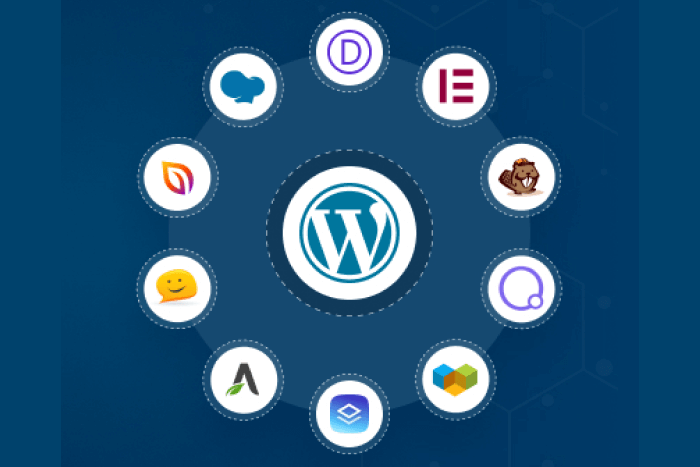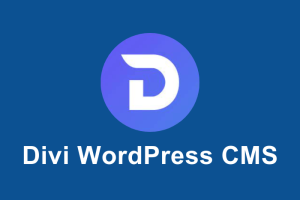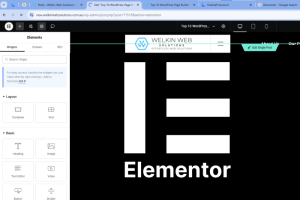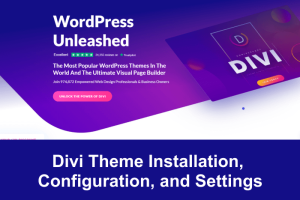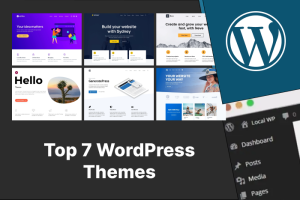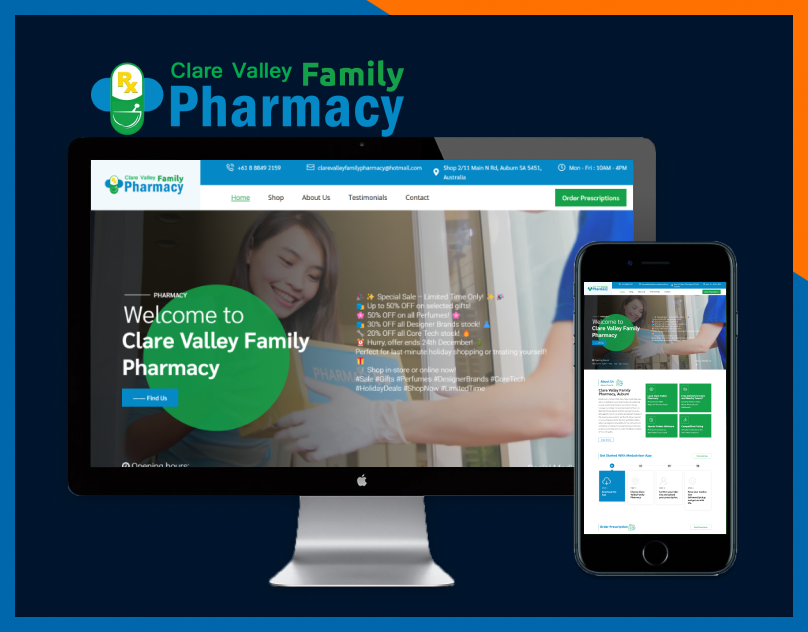Top 10 WordPress Page Builders 2025 - Depth Reviews & Testing
Creating a website can feel overwhelming. Balancing an attractive design with functionality while managing technical complexities can be a challenge. From coding to organizing your site’s layout, the process can quickly become time-consuming.
That’s where WordPress page builders come in. These powerful tools simplify website creation, making it accessible even for beginners. With intuitive drag-and-drop interfaces, ready-made templates, and endless customization options, you can design a professional-looking site without any coding knowledge.
In this post, we’ll dive deep into WordPress page builders. We’ll explore their features, explain how they streamline website creation, and help you identify the best one for your specific needs. Let’s get started!
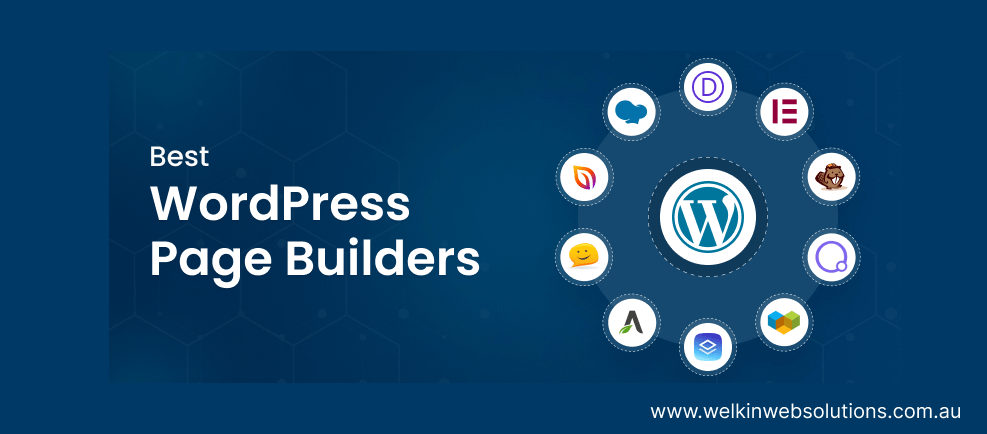
A Brief Overview of WordPress Page Builders
WordPress page builders are plugins designed to simplify the website creation process. They feature an intuitive drag-and-drop interface that allows you to easily arrange various website elements, similar to moving blocks.
These builders offer pre-designed layouts known as templates, which serve as a foundation for your website and come in various styles suitable for different types of sites.
Additionally, WordPress page builders provide the flexibility to customize numerous aspects of your website. You can select different colors, fonts, and layouts to achieve your desired look.
Some builders even include advanced features, such as optimizing your site for mobile devices, allowing custom code integration, and compatibility with other tools.
In summary, WordPress page builders enable anyone to create a website effortlessly. They streamline the process, allowing you to concentrate on what truly matters – your content and your audience.
Key Features of WordPress Page Builders
WordPress page builders are equipped with various features that simplify the process of creating websites. Here are some essential features:
1. Drag-and-Drop Interface: This functionality enables you to effortlessly reposition elements on your page, allowing you to add, remove, or rearrange sections as desired.
2. Pre-Designed Templates: These templates are ready-made designs that can be applied to your website, available in different styles and customizable to meet your requirements.
3. Customization Options: You can modify the appearance of your website by changing colors, fonts, and layouts, enabling you to craft a distinctive site that represents your brand.
4. Integration Capabilities: Certain builders offer the ability to connect with other tools and platforms, which can improve your website’s functionality.
5. Custom CSS: For users seeking greater control over their website’s design, some builders permit the addition of personal CSS code.
Advantages and Limitations of Page Builders
WordPress page builders come with their own set of benefits and drawbacks. Here’s an overview of both:
🟢 User-Friendly: No coding required; simply drag and drop.
🟢 Rapid Development: Fast website setup using templates.
🟢 Budget-Friendly: More affordable than hiring professional developers.
🟢 Versatility: Numerous design options available.
🟢 Easy Maintenance: Simple to update and modify.
🔴 Performance Issues: May be slower due to additional code.
🔴 Limited Customization: Not as adaptable as coding from the ground up.
🔴 Tool Dependency: Removing the builder can disrupt the site.
🔴 Code Quality Concerns: Automatically generated code may not be clean or efficient.
🔴 Learning Curve: Requires time to master all functionalities.
How We Check WordPress Page Builders?
Here are the main criteria we used to test WordPress page builders:
- We selected the most popular and powerful WordPress page builders based on active installations and positive user reviews.
- We used the same server (DigitalOcean Premium) on Cloudways’s fully-managed WordPress hosting for each page builder to ensure consistent performance. You can also use Cloudways Autonomous which is compatible with all these page builders.
- We installed a new WordPress application for every page builder.
- We activated each WordPress page builder.
- We installed and activated the suggested theme for each page builder. If no theme was suggested, we used the Twenty Twenty-One WordPress theme.
- We edited the theme with the WordPress page builder and created a website design and layout that matched a sample website.
- We ran performance tests on each page builder using GTmetrix, Pingdom Tools, and PageSpeed Insights to evaluate core web vital scores, analyze the website’s load speed, and check the Google Page Experience.
You can also use plugins to debug WordPress sites, like WordPress query monitor.
Testing Tools
Here are the website speed testing tools we used:
1. GTmetrix
Here are the website speed testing tools we used:
GTmetrix is an effective tool aimed at improving website performance. It provides detailed insights into a webpage’s loading speed, identifies elements that contribute to delays, and offers recommendations for potential improvements. The tool can conduct tests under various conditions, allowing for a thorough performance evaluation by simulating different locations, devices, and connection speeds.
A notable feature is its capability to monitor page performance over time, sending alerts when performance metrics drop below a specified threshold. Additionally, GTmetrix evaluates the influence of advertisements and Core Web Vitals on page speed and SEO, enabling users to make informed decisions regarding their website optimization strategies. Key metrics include GTmetrix Grade and Web Vitals.
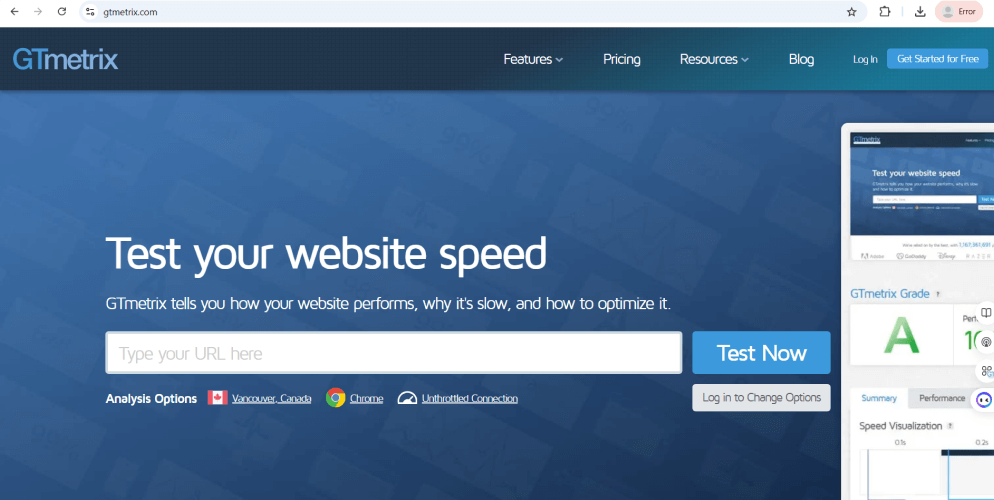
2. Pingdom Tools
Pingdom’s Website Speed Test is a tool that analyzes your website’s loading speed, pinpointing elements that are quick, slow, or overly large. This tool is useful for both professionals and beginners.
It offers a service that tracks your website’s uptime and performance from more than 70 locations worldwide, helping to improve the user experience.
The accompanying chart utilizes colors and icons for straightforward understanding. Various colors signify the different stages of a request, while icons denote the types of content for each request. Furthermore, dots next to each URL indicate the HTTP response codes, giving a detailed view of your website’s performance.
Key metrics include Overall Performance Grade, Load Time, Page Size, and Requests.
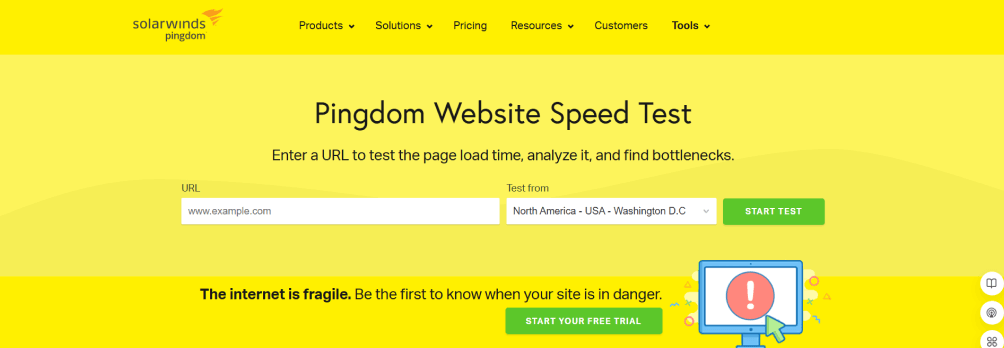
3. PageSpeed Insights
PageSpeed Insights is a tool provided by Google Developers that enables users to assess the performance of their web pages by inputting a URL and receiving a comprehensive report featuring essential metrics like speed score, largest contentful paint, and total blocking time.
In addition to offering performance metrics, this tool also recommends methods to improve web page speed, which can enhance user experience and potentially boost SEO rankings.
PageSpeed Insights includes sections for documentation, updates, and related information on web performance. Users can access a wealth of resources, including best practices, case studies, and podcasts, to further optimize their web pages.
Key metrics include: First Contentful Paint, Speed Index, Largest Contentful Paint, Time to Interactive, Total Blocking Time, and Cumulative Layout Shift.

List of the Best WordPress Page Builders
Now that you know what tools we’re using to measure the performance of each website built with all these page builders, it’s time to get right into it.
| Page Builder | GTmetrix | Pingdom | PageSpeed Insights | Loader.io | |
| 1. | Breakdance Page Builder | 93% | 88 | 99 | 877 ms |
| 2. | Elementor Page Builder | 100% | 88 | 96 | 245 ms |
| 3. | Beaver Builder | 97% | 90 | 96 | 248 ms |
| 4. | Brizy Page Builder | 98% | 93 | 98 | 250 ms |
| 5. | BoldGrid Page Builder | 100% | 91 | 100 | 238 ms |
| 6. | SiteOrigin Page Builder | 88% | 86 | 98 | 240 ms |
| 7. | Spectra Page Builder | 100% | 93 | 99 | 240ms |
| 8. | SeedProd Page Builder | 100% | 93 | 98 | 242 ms |
| 9. | Visual Composer | 99% | 81 | 97 | 247 ms |
| 10. | WP Bakery | 85% | 86 | 72 | 241 ms |
1. Breakdance Page Builder
Breakdance Page Builder is an advanced WordPress plugin that enables users to design and personalize stunning websites through its intuitive visual drag-and-drop interface. As one of the leading WordPress page builders, Breakdance sets itself apart with its unique features and exceptional performance.
It is suitable for both novices and experts, providing over 130 built-in elements and comprehensive WooCommerce integration.
Breakdance is the preferred choice for more than 10,000 creators, allowing them to build impressive websites effortlessly.
In terms of pricing, it is available for just $199.99 per year, which includes access for unlimited sites.
Take advantage of the current deal for an unlimited site license at the same price of $199.99 per year.
Main Features
- 130+ Elements
- WooCommerce
- Full Site Editing
- Popup Builder
- Dynamic Data
- Menu Builder
- Form Builder
- Global Styles
- Performance & SEO
- Design & Build
- Design Library

2. Elementor Page Builder
Elementor Page Builder is a highly popular page builder that is available for free.
The free version, which boasts a 4.5-star rating on WordPress.org, includes over 40 free widgets to help you create professional-looking websites. For those with more advanced requirements, the Pro version of the plugin can be purchased for $59 per year, offering additional features. Elementor provides a robust user interface that allows you to easily create stunning websites using its intuitive drag-and-drop functionality. Like many page builders, it enables you to construct websites from the ground up without any coding knowledge. Any modifications made in the Elementor interface are reflected live on your website, making these page builder plugins user-friendly.
We also have a comparison guide where we evaluate Divi against Elementor, which you might find interesting.
Main Features
- Live Drag & Drop Editor
- Advanced Web Creation
- Professional Workflow
- 100+ Website Designs
- 100+ Widgets
- Premium Support
- Sticky headers or footers for captivating scroll animations

3. Beaver Builder
Beaver Builder is a highly regarded page builder within the WordPress community, boasting over 200,000 activations and a 5-star rating from most users.
The Standard version of the plugin is priced at $99 per year, but for those seeking more advanced features, the Pro or Agency versions are available.
While Beaver Builder may be pricier than some other page builders on this list, it offers a lot to appreciate, making website development an enjoyable experience.
Although we’ve ranked Beaver Builder in third place, it holds its own against competitors like Elementor. Be sure to check out our comparison of Beaver Builder and Elementor.
Main Features
- Powerful features and control
- Drag-and-drop interface
- Ease of use & integration
- Customizable templates
- Responsive websites
- Unlimited websites
- Global Custom CSS

4. Brizy Page Builder
Brizy Page Builder is one of the best WordPress page builders out there that lets you design your websites without development or coding skills.
You can get started with Brizy for free for all your basic website needs. But if you want pro features for your development needs, you can start with the Personal Plan, which starts at $13/mo and unlocks many advanced features for your project!
You can easily create stunning and fully functioning websites with the free version of the plugin, but if you need more pro features, the paid version will arm you with enhanced features and tools.
Main Features
- Code-free website designing
- Intuitive and clutter-free
- Innovative content tools
- Responsive from the get-go
- Jam-packed with features
- Premium features for free

5. BoldGrid Page Builder

BoldGrid Page Builder is yet another lightweight page builder with a unique way of building your website on a visual editing interface.
BoldGrid offers more than just a page builder; it also has its own theme and plugins like W3 Total Cache, BoldGrid Easy SEO, and Total UpKeep. In a way, it’s a complete solution for building your next WordPress website. This page builder comes in one simple price: $30 for the premium version!
Do remember that BoldGrid might not look as feature-rich compared to other page builders on this list. But despite that, if you want to build a simple, basic WordPress website, it gets the job done perfectly, and you can’t go wrong with this.
Main Features
- Drag and drop editor
- Expansive design tools
- Build faster with blocks
- Responsive design
- Advanced options
6. SiteOrigin Page Builder

Creating powerful and responsive websites is straightforward when you use a page builder like SiteOrigin.
Similar to other options on this list, this user-friendly page plugin offers a simple drag-and-drop interface that eliminates the need for coding. While you can begin with a free version, the premium plans provide enhanced control over your designs, starting at $29 for a single site license. Additionally, you can choose the Business or Developer packages for $49 and $99, respectively.
If you’re looking to set up a WooCommerce store, SiteOrigin is an excellent choice as it is a lightweight plugin equipped with all the essential features to create a basic website or landing page.
Main Features
- Custom Post Type Builder
- Post Loop Widget
- WooCommerce Template Builder
- Live editing
- Row and widget styles
7. Spectra Page Builder

The selected text provides a detailed overview of the Spectra Page Builder, a free WordPress page builder designed to enhance the website creation experience for users, particularly those who may not have extensive technical skills.
Key Points and Analysis:
1. User-Friendly Design
– The text emphasizes that Spectra is designed to offer “maximum flexibility and building tools with minimal learning curve.” This suggests that the tool is accessible to beginners, which is a significant advantage in the context of website building. By integrating with the WordPress block editor, it allows users to utilize familiar menus and processes, reducing the intimidation factor often associated with web development.
2. Features and Customization
– Spectra includes “28+ building blocks,” “numerous block patterns,” “wireframes,” and “full website templates.” This variety provides users with a robust toolkit to create diverse and customized websites. The ability to fully customize elements such as colors, typography, and spacing means that users can tailor their sites to reflect their brand identity effectively.
3. Innovative Functionality
– The mention of “Flexbox containers” indicates that Spectra supports modern web design techniques, allowing for responsive and flexible layouts. The ability to “copy a block style and paste it anywhere on your site” is a time-saving feature that enhances productivity. Additionally, “one-click block presets and block patterns” streamline the building process, making it easier for users to implement design elements without starting from scratch.
4. Free vs. Pro Version
– The text distinguishes between the free version of Spectra and the premium offering, Spectra Pro. While the free version provides substantial features, the Pro version includes “more blocks, more design tools, premium templates,” and additional functionalities like support for dynamic content and animations. This tiered approach allows users to start with a free tool and upgrade as their needs grow, which is a common strategy in software offerings.
5. Pricing Structure
– Spectra is presented as a free tool, which is appealing for users who may be hesitant to invest in website building tools. The Pro version is priced at “from $49 per year,” which is relatively affordable compared to other premium page builders. The mention of a “wider ‘toolkit’” that includes other products suggests that users can access a comprehensive suite of tools for a more integrated experience.
Conclusion:
Overall, the selected text effectively highlights the strengths of the Spectra Page Builder, focusing on its user-friendly design, extensive customization options, innovative features, and flexible pricing. This makes it an attractive option for both beginners and more experienced users looking to enhance their WordPress website creation process. The emphasis on ease of use and the ability to scale with additional features in the Pro version positions Spectra as a versatile tool in the competitive landscape of WordPress page builders.
Main Features
- Adds 28+ blocks to the WordPress block editor
- Adds block patterns and wireframes for faster page-building
- Readymade templates for full websites
- Copy and paste block styles across an entire site
- Compatible with all compliant WordPress themes
- Block presets for a coherent look
- Can support dynamic content and animations
8. SeedProd Page Builder

SeedProd Page Builder provides both basic and advanced features, giving you significant control over your website development in a user-friendly package.
Its design interface resembles that of other page builders, utilizing a drag-and-drop system that allows you to position elements to construct your websites.
The basic plan for SeedProd starts at $31.60 per year, while the Elite Bundle is priced at $239.60 per year, catering to professional developers. Additionally,
SeedProd is an excellent choice for creating your WooCommerce website, enabling you to effortlessly design stunning landing pages and incorporate blocks for checkout, carts, product grids, featured products, add-to-cart buttons, and more.
Main Features
- 150+ landing page templates
- Choose from over 20 built-in color schemes
- Custom CSS
- Over 200 built-in themes
- 90+ Pro Blocks
- Pro Elements
- Spam Protection
- Email Marketing Plugin and Software Integration
- Support Channel
- 45+ eye-catching animations
9. Visual Composer

The selected text provides a detailed overview of Visual Composer, a popular WordPress page builder. Here’s a breakdown of its key components:
1. User-Friendly Design: The text emphasizes that Visual Composer is an intuitive drag-and-drop builder, which is a significant advantage for users who may not have a technical background. This feature allows users to create and customize their websites easily without needing to understand coding, making it accessible to beginners.
2. Speed and Efficiency: The mention of speed highlights that users can quickly build pages, blocks, and elements. This efficiency is crucial for those who want to launch their websites promptly without getting bogged down by technical details.
3. Comprehensive Features: Visual Composer is described as having a “design elements library” and a unique feature called the “Visual Composer Hub.” This hub includes nine categories, such as blocks, add-ons, and elements, which provide users with a wide range of options to enhance their website’s design and functionality.
4. Content Elements: The text notes that Visual Composer offers over 500 content elements, unique templates, add-ons, and blocks. This extensive library allows users to create a highly customized website by simply dragging and dropping these elements, further simplifying the design process.
5. Pricing Structure: The pricing information indicates that Visual Composer starts at $49 per year for a single site, which is relatively affordable for users looking for a robust page builder. Additionally, the availability of a free version with 30 elements and 10 templates allows users to try out the tool before committing financially.
Overall, the selected text positions Visual Composer as a powerful and user-friendly tool for website creation, catering to both novices and experienced users. It highlights the builder’s ease of use, extensive features, and reasonable pricing, making it an attractive option for anyone looking to build a WordPress site.
Main Features
- Intuitive visual drag-and-drop editor
- 200+ professional pre-made templates
- 500+ content elements with advanced design options
- Responsive design options on the front end
- Built-in SEO optimization
- Extensive library of add-ons and design assets accessible from the visual builder hub
- Third-party integrations with essential plugins for forms, social networks, and media
- Integrates with multiple font and icon libraries for vector icons and SVGs
10. WPBakery Page Builder

WPBakery Page Builder is a highly regarded page builder known for its widespread use and compatibility with a variety of WordPress themes.
It boasts a unique template library, grid builder, and mobile-responsive design. With more than 50 built-in widgets and over 250 add-ons, WPBakery provides complete control over your website’s layout, ensuring it works seamlessly with any WordPress theme.
If you prefer not to create your own design, you can choose from 100+ pre-designed templates tailored for various businesses.
One of the standout features of WPBakery is its integrated skin builder, which allows for custom elements to match your WordPress theme. Additionally,
WPBakery is friendly for developers, offering a drag-and-drop builder that helps users extend and customize site settings via a structured API.
Regarding pricing, the standard plan is available for $59 for lifetime access, which includes single-site usage, premium support, updates, and access to the template library.
The extended plan, priced at $499 for lifetime access, allows support for up to 10 sites.
Main Features
- Access 50+ versatile content elements
- Employ an advanced grid builder
- Utilize a comprehensive template library
- Rapidly style elements with the built-in skin builder
- Expand capabilities via WPBakery Page Builder API
- Compatible with nearly all WordPress themes
- Enjoy dedicated support Monday-Saturday
Guidelines for Choosing a Page Builder
These guidelines aim to help you make an informed decision, ensuring you select a page builder that is easy to use, offers customization options and provides the support you need. Remember, the best page builder is one that fits your specific needs and goals.
- User-Friendly Interface: Pick one that’s easy to use.
- Customization Options: Look for lots of design choices.
- Pre-Built Templates: Choose one with ready-to-use templates.
- Responsiveness: Make sure it works well on all devices.
- SEO-Friendly: It should help your site show up in search results.
- Plugin Compatibility: Check if it works with other plugins you use.
- Support and Updates: Pick one that offers help and regular updates.
- Performance: It shouldn’t slow down your site.
- Pricing: Make sure it’s affordable and worth the cost.
- Community and Reviews: A big user base and good reviews are a plus.
Summary
We’ve done the legwork for you, identifying and thoroughly testing the best page builders. These tools are particularly beneficial for developers and agencies that build websites and require a robust solution to streamline their processes.
Simply select your preferred page builder from our list, deploy it on a Cloudways WordPress server, and prepare for an exceptional website-building experience. Once your website is up and running, you can focus entirely on your business.
If you’ve any questions or feedback, please feel free to ask in the comments section.
